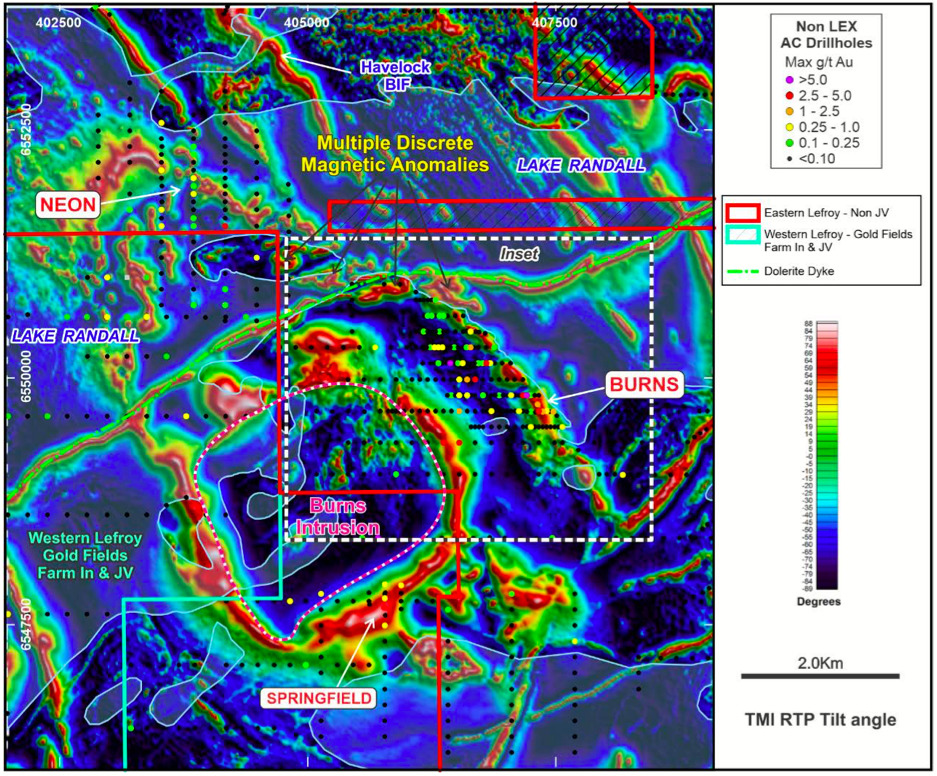You might be interested in
Mining
Ten Bagger: John Forwood says these four WA gold plays are ripe for the picking
Mining
Explorers Podcast: Lefroy’s ‘first of a kind’ Burns gold-copper discovery shows significant scale
Mining
Mining
Gold explorer Lefroy has identified six new magnetic anomalies, extending the Burns intrusive corridor to 3000m at its Lefroy gold project near Kalgoorlie.
Burns has a distinctive, positive, aerial magnetic signature due to strong magnetite alteration of the porphyry and basalt rocks that host the mineralisation.
An aeromagnetic survey over the prospect identified the new anomalies, which have defined a corridor of dioritic intrusions – each of which are considered prospective for mineralisation.
Notably, the northwest trending corridor is over 3000m long and is coincident with a +200 parts per million drill hole copper anomaly based on resampling of wide spaced historical geochemical holes.
Lefroy Exploration (ASX:LEX) is focusing on the largest and northernmost magnetic anomaly – Lovejoy – which lies beneath Lake Randall and is adjacent to the strongest drill hole copper anomaly.
While the company has yet to establish the association between Burns and the diorite porphyry intrusions, it believes there’s a genetic relationship between them.
Lefroy also considers the copper and gold mineralisation hosted by both the diorite porphyry, basalt, and massive magnetite veins to be a new style of gold-copper-silver mineralisation in the area.
“The images from the new magnetic data further support our interpretation that the Burns prospect is one of a number of magnetic anomalies each centred on diorite porphyries considered prospective for gold-copper-silver mineralisation,” Lefroy managing director Wade Johnson said.
“These form a corridor of intrusives, likely along a major structure that potentially extends further to the northwest out to Neon.”

The company says the magnetic anomalies provide strong rationale for an exploration program.
Planning is underway for an RC drilling program to begin in October, with drilling at Lake Randall – initially at the Lovejoy site – planned for November.
“We are very keen to commence RC drill testing of these magnetic anomalies, firstly on land then out on to Lake Randall, with Lovejoy the priority,” Johnson said.
“We have plenty of scope to demonstrate that what we have already discovered at Burns is part of a much larger mineral system, outboard of the larger Burns Intrusion that is also yet to be evaluated.”
This article was developed in collaboration with Lefroy Exploration Limited, a Stockhead advertiser at the time of publishing.
This article does not constitute financial product advice. You should consider obtaining independent advice before making any financial decisions.